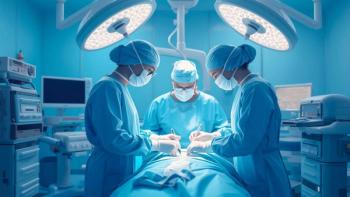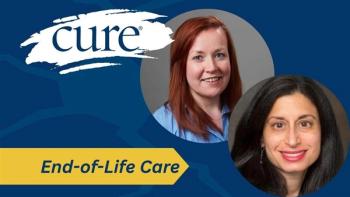
Multi-Chemotherapy Regimen Elicits Improved Outcomes in Rare Form of Pediatric Lung Cancer, But More Research is Needed
The use of a multi-agent chemotherapy regimen resulted in improved outcomes in a group of children with pleuropulmonary blastoma, a rare form of lung cancer, when compared with other regimens.
Treatment with a four-chemotherapy regimen was associated with better outcomes in a group of children with pleuropulmonary blastoma compared with other chemotherapy regimens, according to recently published study findings.
“Kids from this study who were treated with IVADo fared better than the group of kids who were not treated upfront with IVADo chemotherapy,” lead study author Dr. Kris Ann. P Schultz, a pediatric oncologist and scientific director of cancer and blood disorders at Children’s Minnesota in Minneapolis, said in an interview with CURE®. “We’re glad for those improvements, but we still need more effective therapies for children with these rare tumors.”
Pleuropulmonary blastoma is a rare childhood lung cancer, seen primarily in children under the age of 7 years. Types II and III pleuropulmonary blastoma represent the mixed cystic/solid and solid forms of PPB, respectively.
What is IVADo?
IVADo is a combination of the chemotherapies ifosfamide with mesna, vincristine, actinomycin-D and doxorubicin.
In 2007, members from the International Pleuropulmonary Blastoma Registry — convened a group of experts from across the world — who recommended the use of IVADo in patients with this rare form of lung cancer. However, the choice of treatment remained up to the discretion of the child’s treating physician.
Largest-Ever Cohort of Children
Schultz and colleagues recently published a report from the registry that evaluated the outcomes of children with type II and type III pleuropulmonary blastoma following treatment with chemotherapy.
Of note, there are four types of pleuropulmonary blastoma — type Ir, type I, type II and type III. According to the American Society of Clinical Oncology, estimates suggest that approximately 89% of children with type 1 disease are successfully treated. But children with more advanced forms of pleuropulmonary blastoma, types II and III, face a worse prognosis.
Overall, this analysis of outcomes from treatment with chemotherapy included data from 314 children with the rare form of lung cancer enrolled from 1973 to 2021. Children were treated at 204 cancer centers across 47 countries. More than half (55%) of the patients had type II pleuropulmonary blastoma, and the rest had type III disease. From 2007 to 2021, 132 patients received the IVADo chemotherapy regimen.
An analysis of the data showed that children with the rare form of lung cancer treated with the IVADo combination had better overall survival (time from treatment to death from any cause) outcomes than those treated with non-IVADo regimens.
However, that benefit was not as prominent in children who had locoregional (cancer that has spread to close organs such as the chest) or distant (cancer that has spread to the brain or bones) disease.
“We learned a lot from this study,” Schultz explained. “We know that many children are cured with IVADo chemotherapy. But we also know that many children are not (cured), (and) that we need to do better.”
For example, she noted that investigators need to develop strategies to decrease the chance of recurrence near the site of the original tumor and also decrease the risk of the pleuropulmonary blastoma spreading to the brain.
Family History
In 2009, Dr. Ashley Hill and registry collaborators identified that the gene DICER1 was a pivotal driver in the development of this type of rare lung cancer, as well as other tumors.
As a result, Schultz said she now encourages everyone to be aware of their family history to better understand the potential risks for this cancer as well as the other cancers linked to DICER1 including Sertoli-Leydig cell tumor, a rare ovarian tumor, as well as DICER1-related tumors in the kidney, brain and thyroid among others.
“While most individuals with DICER1 gene variation fare well, early detection through family education and surveillance, as well as the development of novel therapies are key to improving outcomes," she concluded. “We can improve outcomes for kids and families with (pleuropulmonary blastoma) and other DICER1-related conditions, but it's going to take all of us working together to make that happen.”
For more news on cancer updates, research and education, don’t forget to
Schultz urges people interested in obtaining more information on pleuropulmonary blastoma, DICER1 and other DICER1-related conditions to contact the International PPB/DICER1 Registry at [email protected]





